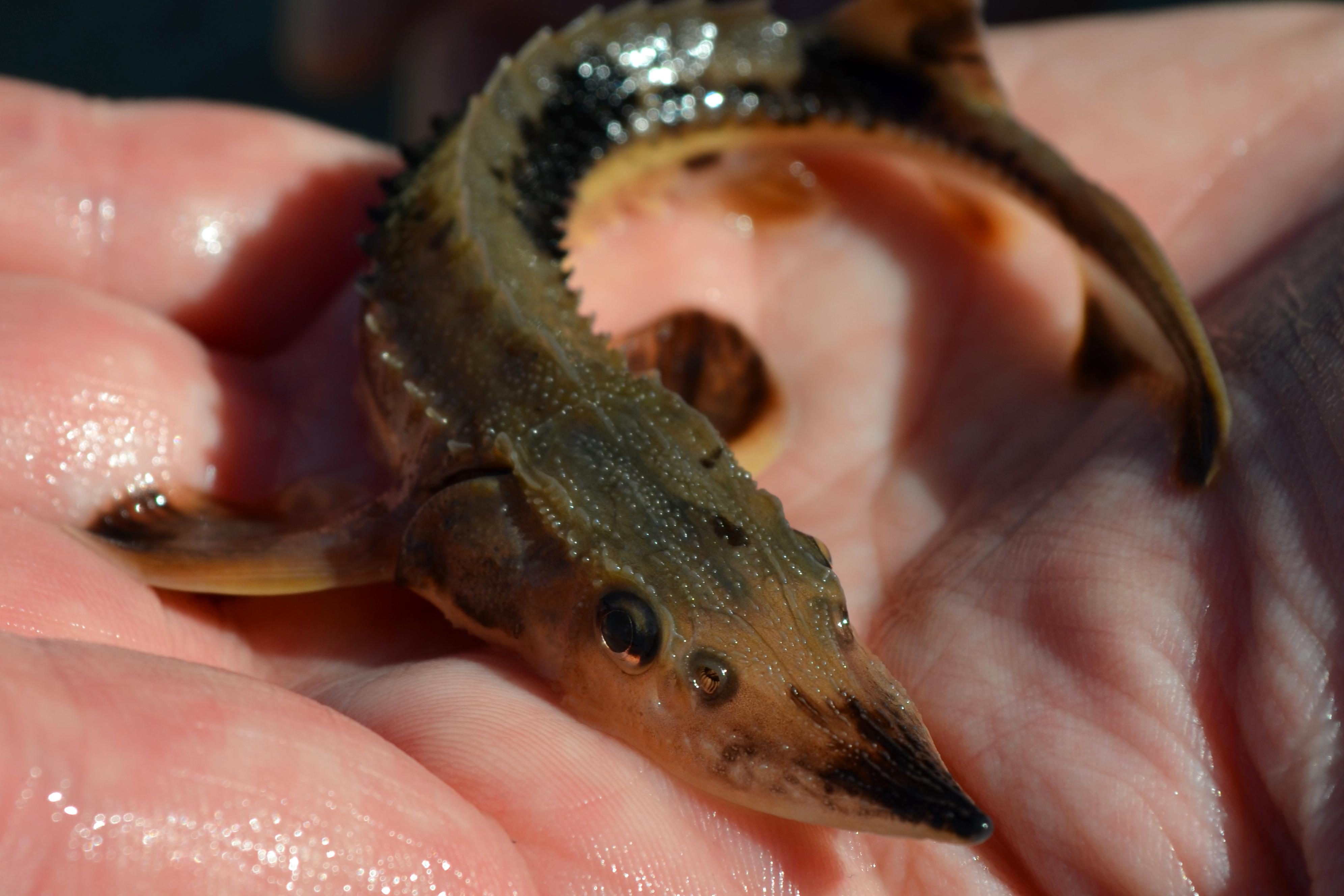
Setting “the little giants” free
Thousands of people – from young children to the elderly – helped stock Lake Erie’s first batch of freshly-minted lake sturgeon last week.
While the massive pre-historic fish, which have been in existence for more than 150 million years have lived in Lake Erie for centuries, habitat degradation, overfishing and pollution have pared their numbers back so far that catching a sturgeon in the lake – or even seeing one in the wild these days — is a once-in-a-lifetime experience. Even most Lake Erie charter captains haven’t seen the big fish reeled in.
But on Oct. 6, the general public took the opportunity to touch, gaze upon and set these little giants free.
Lake sturgeon can live for more than a century and grow to more than seven feet in length and 200-plus pounds. The big fish are considered benthivores, which means they lurk deep in rivers and lakes seeking out prey with sensitive barbels (fish whiskers) then use their pointy snouts to root out food and suck it up. They eat worms, insect larvae, snails, mussels and crayfish – just about any creatures found at the bottom of bodies of water.
The largest sturgeon ever caught in Ohio weighed 216 pounds
The largest sturgeon on record ever caught in Ohio weighed 216 pounds. It was caught by a fisherman in 1929. The fingerlings released were hatched from eggs harvested from lake sturgeon in the Detroit River-Lake St. Clair corridor, where a decent population currently resides.
A portion of the baby sturgeons were raised at a U.S. Fish and Wildlife Service hatchery in Genoa, Wisconsin and transported to Ohio, while the rest were raised at the Toledo Zoo and Aquarium. The zoo’s trailer in Toledo, with multiple tanks, pumped in and circulated water directly from the Maumee River.
According to Kent Bekker, Toledo Zoo’s director of conservation and research, the goal is to stock about 3,000 fingerlings each year for the next 10 to 20 years. This year, about 600 were raised in the zoo’s special hatchery trailer and about 2,400 came from Genoa.
“Sturgeon” means “the stirrer”
“Sturgeon”means “the stirrer,” which is what the fish does when it use its snout to stir up mud in search of food. In the 1800s, the big fish were so plentiful that they were considered a nuisance, often destroying fishing nets with their bony dinosaur-like plates. Later they were found to be valuable for their eggs, which were sold overseas as caviar. At one time there were so many sturgeon in Lake Erie that the fish were burned as fuel and fed to livestock.
In 1885 about 5 million pounds of sturgeon were pulled from Lake Erie, though by the early 1900s that number had plummeted by more than 99 percent, to just a few tons. The sturgeon population had collapsed. But if all things go swimmingly, in just a few decades, the little fish released last week will be big fish in the lake again.
At last Saturday’s event on Lake Erie, people who “sponsored” fish to be released were able to name their micro-shipped sturgeon, and will be updated when and if their fish are caught and scanned in the future. The plan to include the public in sponsoring and releasing the fish will help sturgeon in the long run: a new generation of sturgeon-lovers has just hatched on the banks of the Maumee River.
Featured Image: Juvenile Lake Sturgeon, Photo by Steiger Meister Katie, USFWS via pixnio.com






